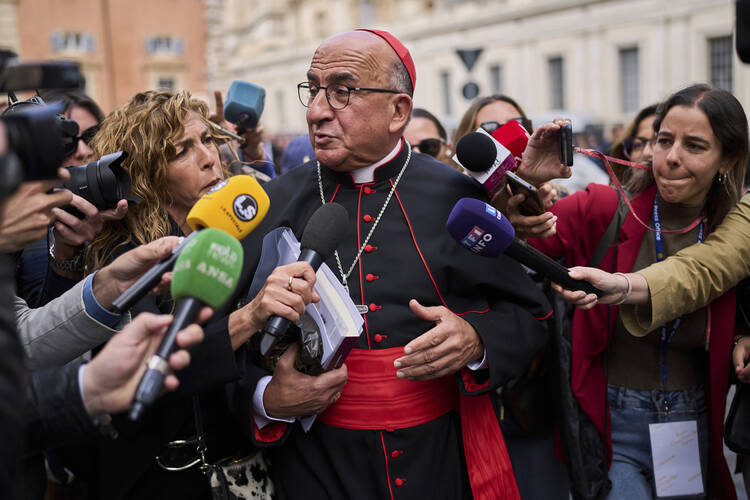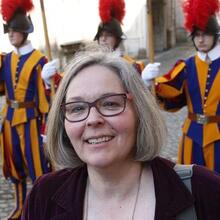VATICAN CITY (CNS)—All but four of the 135 cardinals who are eligible to enter the conclave May 7 to vote for a new pope had arrived in Rome by May 2, according to the Vatican press office.
Spanish Cardinal Antonio Cañizares Llovera, 79, retired archbishop of Valencia, and Kenyan Cardinal John Njue, retired archbishop of Nairobi, who also is 79, have announced they are too ill to take part in the conclave and would not be traveling to Rome.
Matteo Bruni, director of the Vatican press office, told reporters May 2 that he would not name the two others who are missing. The Vatican will provide a list May 7 of all the cardinals who enter the conclave.
Bruni vigorously denied an Italian news report that Cardinal Pietro Parolin, the former Vatican secretary of state widely viewed by the press as a leading candidate to become pope, had a medical emergency during the general congregation meeting April 30.
“No, that is not true. No,” Bruni said.
As the cardinals were meeting May 2, Vatican firefighters were installing the chimney on the roof of the Sistine Chapel. The chimney connects to the stove, installed in a corner of the chapel, where the cardinals’ ballots will be burned. With a chemical additive, black smoke out of the chimney signals that no one was elected while white smoke means the church has a new pope.
Between the death of Pope Francis April 21 and the beginning of the conclave, the cardinals—both those under the age of 80 and eligible to enter the conclave as well as those who are over 80 and are not eligible—meet most days in a general congregation.
The meetings allow the cardinals to study the current state of the church and the Vatican, to discuss challenges the world poses to believers and to exchange views on the qualities the next pope should have.
Bruni said more than 180 cardinals—more than 120 of whom are electors—were present for the May 2 general congregation.
Twenty-five cardinals addressed the group, bringing up a wide variety of topics, Bruni said.
“They spoke of evangelization as the heart of the pontificate of Francis, the church as a communion” and its connection to evangelization, synodality and “how to communicate the Gospel, particularly to the youth,” he said. They also spoke of the witness and suffering of many of the Eastern Catholic churches.
Another cardinal, he said, spoke of how the unity of the church is an essential witness and quoted the biblical passage that says Christians will be recognized by how they love one another.
The “risk and counter-witness” of clerical sexual abuse and financial scandals was also discussed, Bruni said.
“There was a reflection also on the hermeneutics of continuity between the pontificates of St. John Paul II, Benedict XVI and Pope Francis,” he said, as well as on the Eucharist.








